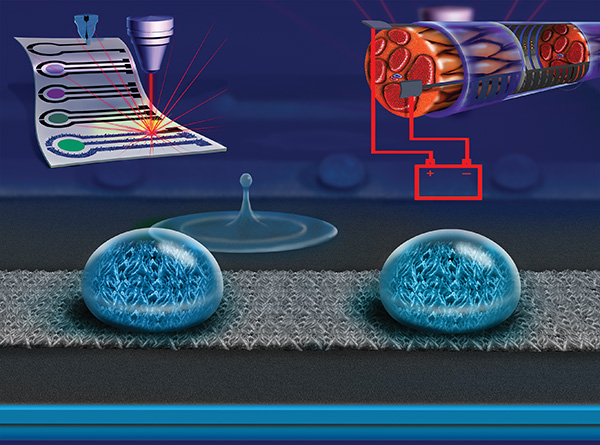
Cyclone Engineer Jonathan Claussen is creating new graphene printing technology and using it to produce low-cost, flexible, highly conductive and water-repellant electronic circuits.
“We’re taking low-cost, inkjet-printed graphene and tuning it with a laser to make functional materials,” said Claussen, an assistant professor of mechanical engineering and an associate scientist at the U.S. Department of Energy’s Ames Laboratory.
Claussen and his research team used flakes of graphene produced by inkjet printing technology to manufacture electric circuits on flexible materials. This graphene serves as not only a great conductor of electricity and heat but is also strong, stable, and biocompatible. However, the printed flakes alone are not highly conductive, so Claussen developed a rapid-pulse process that can treat the graphene without damaging printed surfaces as delicate as paper.
Additionally, the researchers have discovered how to take graphene-printed circuits that can hold water droplets and turn them into circuits that instead repels water. The nanotechnology “would lend enormous value to self-clearing wearable/washable electronics that are resistant to stains, or ice and biofilm formation.”
“One of the things we’d be interested in developing is anti-biofouling materials,” said Loreen Stromberg, a postdoctoral research associate in mechanical engineering and for the Virtual Reality Applications Center. “This could eliminate the buildup of biological materials on the surface that would inhibit the optimal performance of devices such as chemical or biological sensors.”
The research team included faculty, students, and other researchers from across the fields of mechanical engineering, agricultural and biosystems engineering, materials science, and chemistry from four different universities. The team is now working with the Ames-based startup NanoSpy Inc. to commercialize the technology.